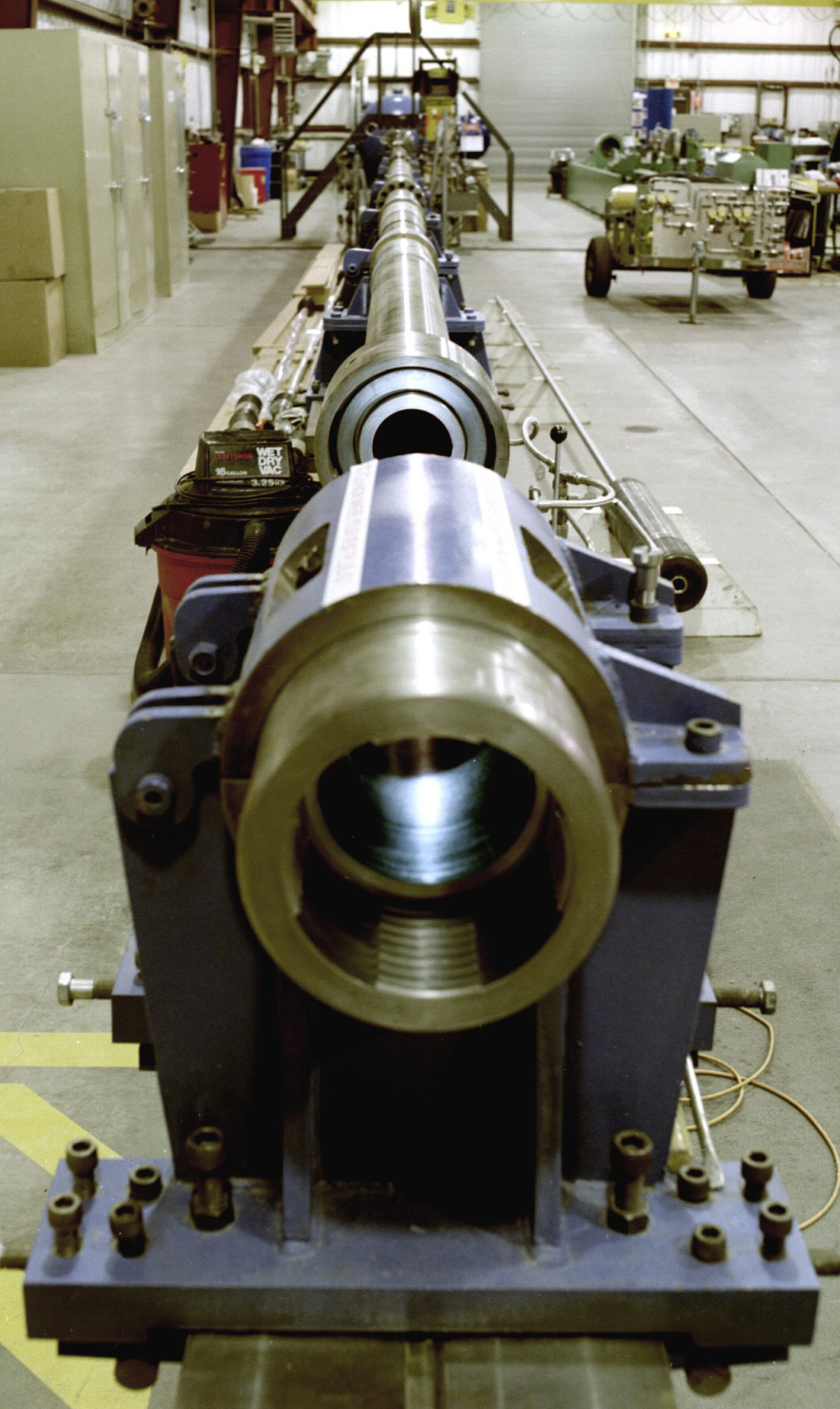1.0 caliber, .50 caliber, and two .17 caliber two stage light gas guns are housed in the Remote Hypervelocity Test Laboratory. These guns use gunpowder and highly compressed hydrogen to accelerate projectiles at speeds up to 27,500 feet per second to simulate impacts of particles on spacecraft and satellite materials and components.
Two Stage light gas guns use gunpowder, the first stage, and highly compressed hydrogen, the second stage, to accelerate projectiles at high velocities to simulate orbital debris impacts on spacecraft and satellite materials and components.
First Stage
The first stage uses conventional smokeless gunpowder as its propellant and works the same way as firing a bullet from a gun. The second-stage propellant uses a highly compressible light gas such as hydrogen. Since light gases have very low molecular weights, they are easily compressed to the high pressures needed to efficiently launch projectiles at hypervelocity speeds. The gun’s breech contains the first-stage powder charge, set off by an electronic igniter. The ignition provides the explosion that drives a piston forward down the pump tube, rapidly compressing the hydrogen gas that provides the second-stage launch power. The front face of the piston is a hollow cone that forms a gas seal as it compresses the hydrogen at a speed of approximately 2,500 feet per second. The back end of the piston uses an O-ring to seal the expanding gases from the powder charge.
Second Stage
The taper-bored, high pressure (HP) section referred to as the high-pressure coupling halts the propelled piston at the end of its travel down the pump tube. In the HP section, rapid internal pressurization is followed by an extremely high level of impact caused by the halted piston. A petal-valve diaphragm retains the gas until it bursts and upon rupture, the launch package containing the sabot and the projectile is accelerated by the rapidly expanding light gas down the barrel into the expansion tank where a stripper plate separates the projectile from the sabot. The sphere enters the target tank (with air removed to replicate the vacuum of space) and hits the test article. The ASME-rated target tank is designed to contain the gas from the second-stage and the eruption of shrapnel and debris from the projectile’s impact on the test article.
Demonstration of how a two-stage light gas gun works.



























